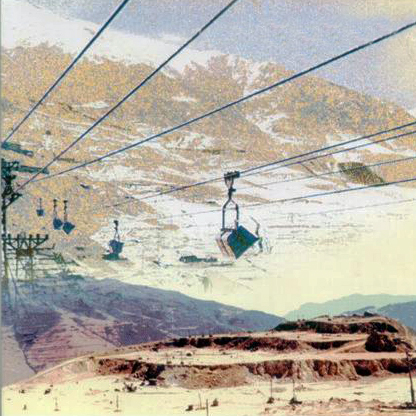ON THE INDUSTRIAL HISTORY OF ARMENIA
Civilisation in Armenia is thousands of years old, but the high mountains and deep valleys of the Lesser Caucasus are a major obstacle to economic development. Arable land is scarce, in the mountains only a few mineral resources are found and ther are no energy resources worth mentioning. Moreover, since the Middle Ages, the country has repeatedly been a bone of contention between the surrounding rival great powers.
The most important raw material is copper, which was already mined in prehistoric times. At the end of the 18th century, mining began on a larger scale, especially in the towns of Kapan and Alaverdi. Economic activities increased after the country passed from Persian to Russian hands in 1828. The processing of cotton and crops for export to the tsarist empire began, wine cultivation was intensified and in 1887 the first factory for cognac production was built in Yerevan – cognac still is Armenia's best-known export today. From 1899 onwards, railways connected the Russian city of Kars (today Turkey) and Tbilisi in Georgia, which also stopped in the Armenian city of Gyumri (then Alexandropol). Thanks to the new transport connection, investors – mostly French - expanded copper mining in nearby Alaverdi. During the construction of further lines in the following years, Yerevan was connected. Slowly, a working class formed and the first signs of urbanisation appeared in the mining centres.
During the First World War and the following turmoil, the still agrarian, backward country suffered severely from hunger and destruction. In 1922, the territory of present-day Armenia became part of the Soviet Union, which initiated the industrialisation programme common in socialist economic policy. One focus was on energy supply: in Yerevan, in 1923 the first hydroelectric power plant was built, and in 1936, construction began on the Sevan-Hrasdan Cascade, a chain of seven power plants fed by water from Lake Sevan and the Hrasdan River. At the same time, urgently needed irrigation canals for agriculture were built.
Moscow intensified the mining of copper and molybdenum in Alaverdi, and established a diversified industrial landscape in Yerevan, Gyumri and Vanadzor: chemical combines sprang up, factories for mechanical engineering and armaments were opened, and enterprises for textiles, shoe and food production were established. The aluminium smelter in Yerevan developed into one of the largest European producers of aluminium foil. By the 1930s, industry was already generating most of Armenia's economic output.
From the 1950s onwards, electrical engineering became the speciality of Armenian production: the spectrum ranged from calculating machines and computers to electronic components for Soviet air defence. This was associated with the development of highly specialised research facilities, particularly the present-day "Yerevan Computer Research and Development Institute", founded in 1956 by the highly respected mathematician Sergei Mergelian. The innovative computer families "Rasdan-2" and "Nairi" were developed there in the 1960s. The Museum of Science and Technology in Yerevan documents these pioneering achievements.
In order to remedy the greatest weakness of the Armenian economy, the Soviet leadership had a number of new thermal power plants built in the 1960s, but they still relied on oil and gas imported from abroad. As Lake Sevan was increasingly losing water due to the high demand of the power plants, the construction of an almost 50-kilometre-long tunnel bringing water from the Arpa River began. In 1980, the Metsamor nuclear power plant went into operation.
Nevertheless, the country remained dependent on heavily discounted energy imports from the Soviet Union, so that the weaknesses of the socialist industrial policy became drastically apparent when the USSR collapsed: Armenia lost practically its entire energy supply, and at the same time a large part of its export markets collapsed. In particular, the Russian military dropped out as a major buyer of armaments. The catastrophic earthquake in 1988 and the wars with neighbouring Azerbaijan have further aggravated the dramatic economic crisis.
Armenia was a union republic of the 'Union of Soviet Socialist Republics (USSR)', which was dissoluted in 1991.
Therefore, for completeness, also read our articles on the industrial history of the other former soviet republics
Azerbaijan
Belarus
Estonia
Georgia
Kazakhstan
Latvia
Lithuania
Moldova
Russia
Ukraine


